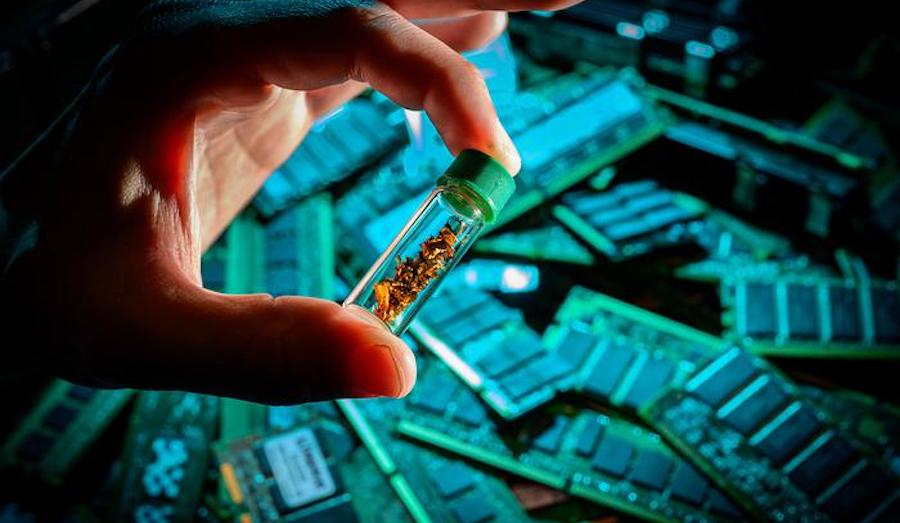Scientists develop greener method for extracting gold from low-grade ore, e-waste

University of Illinois Urbana-Champaign researchers have developed a new technique to safely extract valuable metals locked up in discarded electronics and low-grade ore using dramatically less energy and fewer chemical materials than current methods.
In a paper published in the journal Nature Chemical Engineering, the scientists note that gold used in electronics accounts for 8% of the metal’s overall demand, and 90% of the gold used in electronics ends up in US landfills yearly.
To address this issue, the researchers came up with the first precious metal extraction and separation process fully powered by the inherent energy of electrochemical liquid-liquid extraction, or e-LLE. The method uses a reduction-oxidation reaction to selectively extract gold and platinum group metal ions from a liquid containing dissolved electronic waste.
In the lab, the team dissolved catalytic converters, electronic waste such as old circuit boards, and simulated mining ores containing gold and platinum group metals using an organic solvent. The system then streamed the dissolved electronics or ores over specialized electrodes in three consecutive extraction columns: one for oxidation, one for leaching and one for reduction.
“The metals are then converted to solids using electroplating, and the leftover liquid can be treated to capture the remaining metals and recycle the organic solvent,” lead researcher Xiao Su said in a media statement. “The stream containing the organic extractant is then pumped back to the first extraction column, closing the loop, which greatly minimizes waste.”
An economic analysis of the new approach showed that the new method runs at a cost of two orders of magnitude lower than current industrial processes.
“The social value of this work is really its ability to produce green gold quickly in a single step, greatly improving transparency and trust in conflict-free recycled precious metals,” said postdoctoral researcher Stephen Cotty, first author of the article.
According to the team, one of the many advantages of this new method is that it can run continuously in a sustainable fashion and is highly selective in extracting precious metals.
“We can pull gold and platinum group metals out of the stream, but we can also separate them from other metals like silver, nickel, copper and other less valuable metals to increase purity greatly – something other methods struggle with,” Su said.
The researchers also pointed out that they are working to perfect this method by improving the engineering design and solvent selection.
More News
California start-up launches next-generation magnesium production technology
May 28, 2025 | 03:09 pm
{{ commodity.name }}
{{ post.title }}
{{ post.date }}


2 Comments
Pieter
I like to know more about the process of getting the gold ,silver and platinum from the sc
I want to more about the removal of gold and silver from circuit board’s and the process of removing of them from the circuit board, s .Thank you.
Randy Speer
Nice work. How can I get involved?